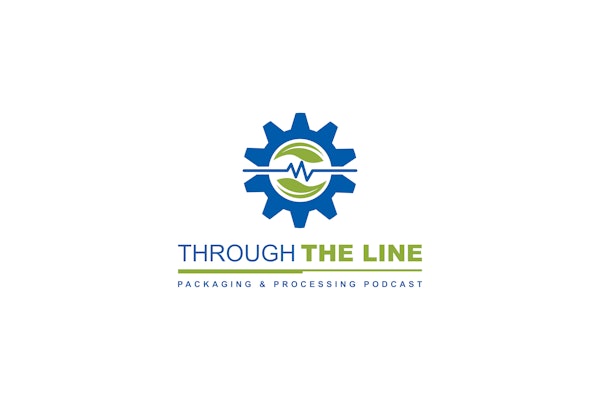
As packaging equipment becomes increasingly complex, end users recognize the vital need for more worker training, both for operators and for maintenance people. So reports an exclusive Packaging World survey, conducted this summer on the magazine’s Web site, packworld.com.
Because survey respondents participated via the Internet, it’s not surprising that many respondents sought more training programs available online or via CD-Rom disks. This would allow companies to schedule employee training at times convenient to them, regardless of the availability of training personnel, either those from within their companies or furnished by suppliers.
Since the survey was limited to participants who visited packworld.com, the survey was not targeted to PW readers at specific types of companies, sizes of companies or to individuals holding specific job titles. Thus, the 146 survey respondents covered here probably represent a more diverse group of manufacturers than PW typically uses to categorize its readers. More information on the types of companies whose people participated in this survey can be found in the sidebar on p. 118. It’s also important to note that this is the first online survey conducted by PW that covered an industry topic that was not specifically related to the Internet.
Is there time for training?
Available time for training was unquestionably the issue that respondents feel is most critical to their company’s approach to training on packaging equipment (Chart 1). But a few other issues were frequently cited as most important at other firms. Trainer skills and company resources devoted to training were also mentioned by nearly a quarter of the 146 respondents.
These results correlated closely to the comments by participants about training shortcomings at their firms. Many respondents sought more time for training. “We need more training, but we just don’t seem to have enough time for it,” according to a maker of dried fruit products. The respondent from a leisure products maker griped, “It seems as if [management] thinks training is a waste of time and money. To me, increased training will lead to fewer breakdowns and a reduced need for maintenance.” This is echoed by an employee at a personal care products maker. He asks his company to “commit a real budget to training. No one seems to take it seriously enough.”
“We are so busy that there simply isn’t enough time to train,” says a representative of an industrial products company. “I think our employees would be [more loyal] if only we had the time to orient them well.” A representative of another industrial products maker sees a Catch-22 situation. His company’s “inability to maintain a good workforce” minimizes the effectiveness of training, he says.
A bigger factor in purchasing
There’s little doubt that vendor training is becoming an increasingly important factor to companies looking to purchase equipment. In fact, it’s somewhat surprising that 17.2% of survey participants claimed it wasn’t a serious consideration (Chart 2). A regional maker of household cleaning products chides his company for not “linking training to the purchase agreement for equipment.” A pharmaceutical company’s respondent sees costs as the obstacle. “Encourage critical training, despite its high costs,” was his suggestion.
Survey respondents were especially concerned about training workers when new equipment is installed. When the survey asked them to rate the importance of training for new machinery, 74.6% said it was important or critically important (Chart 3). Another 20.6% called training moderately important, and fewer than 5% said it was unimportant.
However, there was a wide variety of opinions about how and where training for new equipment should be performed. A frequently mentioned suggestion was offered by a maker of apparel products. “More follow-on training after initial training sessions” was his idea. The representative of a pharmaceutical company sought the same. “We need continued on-site training after machine purchase and installation,” he said. Others wanted all training completed prior to equipment being put into service.
However, one representative of a medical products manufacturer suggests that training “should be away from the worker’s normal shift and job duties.” The respondent from a national food processor said she feels “more intensive training should be done off-site.”
Whether on- or off-site, training programs can create time pressures, forcing learning on schedule. A frozen foods processor’s participant sees time demands a little differently. “The main complaint I hear is ‘I didn’t hear that step.’ This is why a training video would expand the amount of time a worker has to grasp the program,” he says.
Company commitment?
Although the preponderance of participants (more than 97%) seek more and better training at their companies, a small number of the packagers indicated that they feel their companies are already doing an adequate or good job in training for packaging machines or components.
For example, a representative of a large industrial company said that “no additional training on equipment is required” at his company. A major national food company’s respondent cited his company’s successes. “In-house training improves the knowledge of maintenance personnel and machine operators,” he said. He added that his company requires that the same controls be used on all equipment purchased and notes that “control panels and screen layouts are the same for all types of equipment to assist operators in moving from one piece of equipment to another.”
Another small, but larger number of respondents declined to answer the question that sought to identify shortcomings in training at respondents’ companies. These contrarian responses help to create some balance among survey respondents. This subject was one of two survey questions that allowed participants to type in answers that reflected experiences at their companies.
Obviously, many respondents are less than confident that their companies believe in the value of training. The representative of a national maker of computer products would like his company to engage in “more formal training for new hires.” This concept was seconded by the respondent from a national paint company. A food company participant suggested “training workers before they start to work.” But he admitted this would be costly. A different food processor’s representative had an opposing view. “Employees that have been at work for a while seem to be left out of the training loop,” he claimed.
An industrial products company representative had a solution, albeit an expensive one. “Find the time for one-on-one training, based on the knowledge level of each person. The varying educational levels of personnel makes group training tedious for the ‘old dogs.’”
One indication that company commitments might be shallow is the fact that just over one-quarter of respondents stated that their companies tie promotions or salary raises to completion of training (Chart 4). Similarly, only half of the respondents reported that their companies actively recruit workers that have been trained at vocational schools (Chart 5).
Six of every 10 respondents said their companies have no relationships with any type of formal training institution, like vocational schools or universities. However, the fact that nearly 40% said their companies have established a relationship may be an indication of progress.
Other sources for training
The survey asked participants to evaluate the effectiveness of training performed by a variety of sources that were unaffiliated with equipment manufacturers. The survey identified vocational schools, consultants, industry associations and component suppliers as the non-OEM training resources.
Vocational schools scored poorest in training effectiveness, report the survey respondents (Chart 6), with an “ineffectiveness” rating of 41.3%. Meanwhile, component manufacturers were highest rated, with an “effective/very effective” rating of 41.7%. Both industry associations and consultants weren’t far behind.
Missing from the prepared non-OEM list was in-house training. And from a beverage company’s participant came the plea for more in-house skills. “I work for a small company, and its training staff is small so the number of courses available is limited. We need to increase the skills of our in-house trainers.”
Other obstacles cited
Survey participants listed a variety of obstacles to effective training they see in their companies.
“Add manpower to allow for cross-training for back-ups,” noted a respondent from an aerospace products company as well as a participant from a major Canadian food processor. “Cross-functional training helps employees see the ‘big picture,’” he reports. “We need to add resources to allow current staff the time to train,” said a medical products maker’s respondent.
The respondent from a major national beverage producer wanted his company to “find a way to get everyone to be a trainer. Usually, it’s just a select group of people.” “We need to add resources to allow current staff the time to train,” said a medical products maker’s respondent.
A broader approach to training was mentioned by the representative of a pharmaceutical company. “Train all operators, not just a select few. Each time the information is passed on from the originally trained operator, important information is lost.”
A worker at the distribution center for a housewares products maker also wanted a broader approach. “Until recently, training was only available at the supervisor level. Now we’re beginning to use it for [hourly] workers, but it’s not extensive enough.” A representative from a regional food company felt it’s important to make training more widely available “to encompass more employees,” she said.
“Training shouldn’t overlook the ‘real-world’ situations that happen daily in plants,” commented a representative of a maker of outdoor grills. “Typical training is usually ‘utopia.’ We must keep our sights high, but our goals should be attainable using steps that can be reached in a timely fashion,” he stated.
From a small company’s perspective, the representative of a personal care producer sought an orderly approach. “Get [training] organized!” was his forceful suggestion. “Lack of standardization” was the criticism from a respondent from an industrial products company.
“More detailed training” was mentioned by several, including a participant from a home appliance manufacturer. A representative from a food processor lamented that his company didn’t “have more knowledge of better training sources.”
Some suggestions were very specific. “Software training, especially Wonderware. I don’t know much about software, and this is the project I’m working on right now,” said a participant with a maker of office supplies. Another, a representative of a national cleaning products company, suggested that companies need to “recognize the need to properly train the electricians.”
However, shortcomings aren’t always the fault of the company, some respondents admitted. A representative of a packaging converter cited “attitude” by workers as a shortcoming. Too often, she pointed out, “workers seem indifferent to the objectives [of training].”
A food company representative identified a different problem. “We have many employees who have limited understanding of English,” she reported. “So they present a language barrier to effective training.”
See sidebar to this article: Profiling the respondents
See sidebar to this article: Factors important to effective training

























